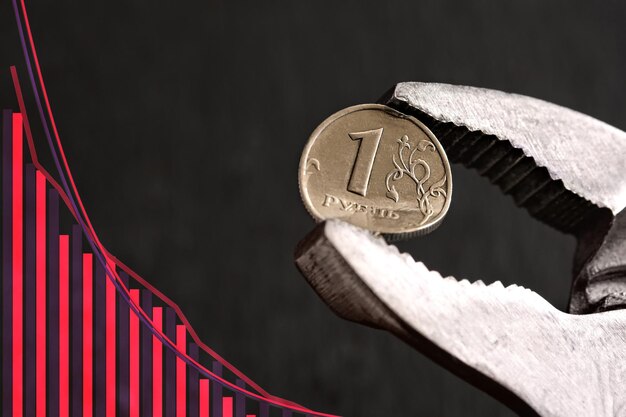Understanding the Evening Star Candlestick Pattern – A Comprehensive Guide for Trade and Investors
Embark on a captivating journey through the enthralling realm of the financial markets, where seasoned traders unearth hidden treasures concealed within the luminous canvas of candlestick patterns. In this illuminating exposé, we delve into the enigmatic phenomenon known as the Evening Star, a celestial formation that inspires awe and foretells potential shifts in market dynamics.
Step into the world of trading as we unravel the mysteries of this celestial configuration, uncovering its intricate symbolism and deciphering the omens it presents. Like a stargazer scanning the night sky, the astute trader examines a constellation of trading patterns to anticipate the ebb and flow of market forces, and the Evening Star undoubtedly holds a prominent place in this celestial pantheon.
Allow yourself to be ensnared in the spellbinding dance between darkness and illumination as we examine the anatomy of the Evening Star formation. Comprised of three distinct candles, this intriguing pattern exhibits a unique interplay of light and shadow, hinting at the delicate balance between bullish and bearish sentiment.
While guided by the light of knowledge, it is crucial to navigate through the complexities of this enigmatic pattern, for a misinterpretation can lead the unsuspecting trader astray. Thus, we shall equip you with the tools and wisdom necessary to discern true signals from mere illusions, allowing you to position yourself advantageously amidst the volatile tides of the market.
Understanding Candlestick Patterns
The study of candlestick patterns in trading is a crucial aspect for any informed trader. These patterns provide valuable insights into the potential direction of price movements and can help traders make more informed decisions.
Key Components of Candlestick Patterns
Understanding candlestick patterns requires familiarity with their key components. Each candlestick consists of a body and two wicks, representing the opening and closing prices, as well as the high and low prices of the trading session. The length and shape of these components contribute to the overall interpretation of the pattern.
Interpreting Candlestick Patterns
Candlestick patterns can be bullish or bearish, indicating either upward or downward price movements. By analyzing the various patterns, traders can gain insights into market sentiment and potential reversals. Some common candlestick patterns include the doji, hammer, engulfing, and shooting star, each with its own distinct characteristics and predictive power.
- The doji pattern, for example, represents indecision in the market and often precedes significant price reversals. The appearance of a doji after a strong trend may indicate an upcoming trend reversal.
- The hammer pattern, with a small body and long lower wick, suggests potential bullish reversals. It signifies that buyers are stepping in after a period of selling pressure.
- The engulfing pattern occurs when a smaller candlestick is completely engulfed by a larger one. This pattern is often seen as a strong signal of a trend reversal.
- The shooting star pattern is characterized by a small body at the bottom of a long upper wick. It suggests an impending bearish reversal, signaling that sellers may take control after a period of buying pressure.
By understanding these candlestick patterns and their interpretations, traders can improve their ability to spot potential market reversals and make more informed trading decisions.
The Evening Star Pattern: Definition and Characteristics
In this section, we will explore an intriguing candlestick pattern known as the Evening Star. We will examine its definition and delve into its various characteristics. The Evening Star pattern is a significant formation in technical analysis, providing insights into potential reversals in market trends.
| Definition | Characteristics |
|---|---|
| The Evening Star pattern is a three-candlestick formation that typically occurs at the end of an uptrend. | 1. The first candlestick is a long bullish candle, representing a period of strong buying pressure. |
| 2. The second candlestick is a small-bodied candle that opens higher than the previous candle and closes near its midpoint. | |
| 3. The third candlestick is a long bearish candle that closes below the midpoint of the first candle, indicating a shift in sentiment from bullish to bearish. | |
| 4. The pattern is often accompanied by a gap between the first and second candle, further confirming the reversal signal. | |
| 5. The Evening Star pattern is considered more reliable when it occurs after a prolonged uptrend and at significant resistance levels. |
By understanding the definition and characteristics of the Evening Star pattern, traders can use this knowledge to identify potential opportunities in the market. It is important to note that this pattern should be confirmed with other technical indicators and factors before making trading decisions. Now that we have explored the Evening Star pattern, let us move on to the next section to explore its significance in trading strategies.
Interpreting the Evening Star Pattern: Bullish Reversal Signal
The Evening Star pattern is a renowned candlestick pattern identified in technical analysis, often viewed as a reliable signal for identifying a potential bullish reversal in the financial markets. The pattern consists of three candles that represent a shift in market sentiment from bullish to bearish, followed by a potential rebound in prices. This section will delve into the interpretation of the Evening Star pattern, highlighting its relevance as a bullish reversal signal and its significance for traders.
Understanding the Evening Star Pattern
The Evening Star pattern typically begins with a large bullish candle, signaling a period of upward momentum in the market. This initial candle is followed by a smaller bearish or bullish candle that reflects a potential weakening of the previous uptrend. Finally, the pattern concludes with a large bearish candle, which suggests a reversal of the prior bullish sentiment. The spacing and lengths of the candles are essential factors to consider when interpreting this pattern.
Key Characteristics and Significance
Recognizing the Evening Star pattern is crucial for traders as it provides valuable insights into a potential shift in market sentiment. This pattern is often regarded as a strong indication of an upcoming bullish reversal, where sellers lose momentum, and buyers regain control. Traders typically look for confirmation signals such as volume analysis or the presence of additional technical indicators to strengthen their understanding of the pattern’s significance.
| Characteristics | Interpretation |
|---|---|
| Large bullish candle | Represents an existing uptrend |
| Small bearish or bullish candle | Indicates a potential weakening of the prior trend |
| Large bearish candle | Signals a reversal in market sentiment |
It is essential for traders to exercise caution when relying solely on the Evening Star pattern for decision-making. Proper risk management strategies, combined with thorough analysis, are recommended to enhance the probability of successful trades.
How to Identify and Trade the Evening Star Pattern
In this section, we will explore a powerful candlestick pattern that can provide valuable insights into potential reversal opportunities in trading. This pattern, commonly known as the Evening Star Pattern, is characterized by a specific arrangement of three consecutive candlesticks.
Identifying the Evening Star Pattern involves recognizing a sequence of three candlesticks: the first is a large bullish candlestick, the second is a smaller candlestick with a small body and a gap from the first candle, and the third is a bearish candlestick that closes within the gap. This pattern signifies a shift in market sentiment from bullish to bearish and can be a precursor to a potential downward trend reversal.
Once you have identified the Evening Star Pattern, it is important to wait for confirmation before taking any trading actions. This can be done by observing the price action and looking for additional signals such as a bearish confirmation candle or a break of a key support level. Confirming the pattern helps to increase the reliability of the signal and reduces the risk of false signals.
When trading the Evening Star Pattern, it is recommended to place a stop-loss order above the high of the third candlestick to limit potential losses in case the reversal does not occur as anticipated. Additionally, it is essential to set a target profit level based on key support or resistance levels or by using technical indicators to gauge potential price targets.
To further enhance the effectiveness of trading the Evening Star Pattern, it is advisable to consider other technical analysis tools and indicators such as trendlines, moving averages, or oscillators. These tools can provide additional confirmation or help identify potential entry and exit points for the trade.
Remember, like any trading strategy, the Evening Star Pattern is not infallible, and it is recommended to use it in conjunction with other analysis techniques and risk management strategies. It is essential to continuously monitor the market and adjust your trading decisions based on changing market conditions.
In conclusion, the Evening Star Pattern is a powerful candlestick pattern that can provide valuable insights into potential reversal opportunities in trading. Understanding how to identify and trade this pattern can help traders make informed decisions and increase their trading success. Remember to always practice proper risk management and use additional analysis tools to enhance the effectiveness of this pattern.
Questions and answers: Evening star candlestick
What is the evening star candlestick pattern? How can it be identified?
The evening star is a bearish reversal pattern that consists of three candles. The first candle is bullish, followed by a small-bodied candle that can be bullish or bearish, and finally, a large bearish candle. This pattern is identified when the second candle closes above the previous candle’s high and the third candle opens below the second candle’s close.
How reliable is the evening star pattern for traders?
The evening star pattern is considered to be a reliable indication of a potential trend reversal, especially when it appears after an uptrend. However, traders should always combine it with other technical analysis tools and confirmatory signals to increase the accuracy of their trades.
What is the significance of the evening star pattern’s confirmation?
The confirmation of the evening star pattern occurs when a fourth bearish candle follows the pattern. This indicates a stronger signal of a reversal. Traders often use this confirmation as an entry point to open short positions or to place stop-loss orders to protect their existing long positions.
Can the evening star pattern be applied to any financial market?
Yes, the evening star pattern can be applied to various financial markets, including stocks, forex, commodities, and cryptocurrencies. The pattern’s principles remain the same across different markets, but traders should consider the market’s liquidity and volatility before making trading decisions based on this pattern.
Are there any variations or similar patterns to the evening star pattern?
Yes, there are variations and similar patterns to the evening star, such as the shooting star and bearish harami. The shooting star pattern has a long upper shadow, while the bearish harami pattern has a small bearish candle inside the previous bullish candle. Traders should study and understand these patterns to have a more comprehensive view of market trends.
What is the Evening Star candlestick pattern?
The Evening Star candlestick pattern is a three-candle reversal pattern that often occurs at the top of an uptrend. It consists of a large bullish candle, followed by a small-bodied candle with a higher high and lower low, and finally, a large bearish candle that closes below the midpoint of the first candle.
How can traders use the Evening Star candlestick pattern in their trading strategy?
Traders can use the Evening Star pattern as a signal for a potential reversal in an uptrend. When they encounter this pattern, they may consider selling their long positions or opening new short positions. However, it’s essential to wait for confirmation from other technical indicators or price action before making decisions based solely on the Evening Star pattern.
What is the “Morning Star” pattern in candlestick charting?
The “Morning Star” pattern is a bullish reversal pattern in candlestick charting that signals a potential trend reversal from a downtrend to an uptrend.
How does the “Morning Star” pattern typically form?
The “Morning Star” pattern typically forms during a downtrend and consists of three candlesticks: a long bearish candle, followed by a small-bodied candle (such as a doji or spinning top) that gaps lower, and finally a long bullish candle that closes above the midpoint of the first candle.
What role does the doji candle play in the “Morning Star” pattern?
The doji candle in the “Morning Star” pattern represents indecision in the market and acts as a transitional phase between the bearish and bullish candles, signaling a potential shift in sentiment from selling pressure to buying pressure.
What does it signify when the “Morning Star” pattern appears on a price chart?
When the “Morning Star” pattern appears on a price chart, it signifies that selling pressure may be diminishing and that buyers are gaining control, potentially leading to a reversal of the prevailing downtrend.
How reliable is the “Morning Star” pattern for predicting trend reversals?
The “Morning Star” pattern is considered a relatively reliable bullish reversal pattern, especially when it forms after a sustained downtrend and is confirmed by other technical indicators or chart patterns.
Are there any variations of the “Morning Star” pattern?
While the classic “Morning Star” pattern consists of three candlesticks as described, variations may occur, such as slight differences in candlestick shapes or the absence of gaps between candles, but the overall bullish reversal signal remains similar.
What are some factors to consider when trading based on the “Morning Star” pattern?
When trading based on the “Morning Star” pattern, it’s essential to consider factors such as the strength of the preceding downtrend, volume confirmation, and potential support and resistance levels to increase the reliability of the signal.
How can traders incorporate the “Morning Star” pattern into their trading strategies?
Traders can incorporate the “Morning Star” pattern into their trading strategies by looking for its occurrence on price charts, confirming the pattern with other technical indicators or chart patterns, and using it as a signal to enter long positions or adjust risk management.
What are some common charting platforms or tools that traders can use to identify the “Morning Star” pattern?
Traders can use various charting platforms or tools, such as TradingView, MetaTrader, or other technical analysis software, to identify the “Morning Star” pattern on price charts and receive alerts when the pattern forms.
Can the “Morning Star” pattern be applied to different timeframes?
Yes, the “Morning Star” pattern can be applied to different timeframes, including intraday, daily, weekly, or monthly charts, depending on the trader’s preference and trading strategy.
How do you identify an evening star candlestick pattern on a price chart?
An evening star candlestick pattern can be identified on a price chart when it consists of three candlesticks: a large bullish candle, followed by a small-bodied candle (such as a doji or spinning top) that gaps higher, and finally a large bearish candle that closes below the midpoint of the first candle.
Can you provide an example chart illustrating the formation of the evening star pattern?
Sure, here’s an example chart illustrating the formation of the evening star pattern: [insert example chart].
What signs indicate that an evening star pattern may be forming on a price chart?
Signs that an evening star pattern may be forming include a prolonged uptrend, followed by a gap-up opening, a small-bodied candle indicating indecision, and a subsequent large bearish candle that closes below the midpoint of the first candle.
How does the evening star candlestick pattern differ from the morning star pattern?
The evening star candlestick pattern is a bearish reversal pattern consisting of three candles, while the morning star pattern is a bullish reversal pattern also comprising three candles but signaling a potential trend reversal from a downtrend to an uptrend.
Is the evening star candlestick pattern considered a reliable bearish reversal signal?
Yes, the evening star candlestick pattern is considered a reliable bearish reversal signal, especially when it forms after a prolonged uptrend and is confirmed by other technical indicators or chart patterns.
Can you explain the significance of the doji candlestick pattern in the evening star formation?
The doji candlestick pattern in the evening star formation signifies indecision in the market and acts as a transitional phase between the bullish and bearish candles, indicating a potential shift in sentiment from buying pressure to selling pressure.
How can traders confirm whether an evening star pattern is valid?
Traders can confirm whether an evening star pattern is valid by observing the subsequent price action, looking for confirmation from other technical indicators or chart patterns, and considering the overall market context and trend.
What are some common charting platforms or tools used to identify and trade the evening star candlestick pattern?
Common charting platforms or tools used to identify and trade the evening star candlestick pattern include TradingView, MetaTrader, and other technical analysis software that provide candlestick pattern recognition and analysis tools.
Can you provide an example of a real-life evening star pattern on a price chart?
Sure, here’s an example of a real-life evening star pattern on a price chart.
How does the evening star candlestick pattern signal a potential trend reversal?
The evening star candlestick pattern signals a potential trend reversal by indicating a transition from bullish to bearish sentiment in the market, with the large bearish candle closing below the midpoint of the first candle, suggesting a shift in momentum towards selling pressure.







No responses yet